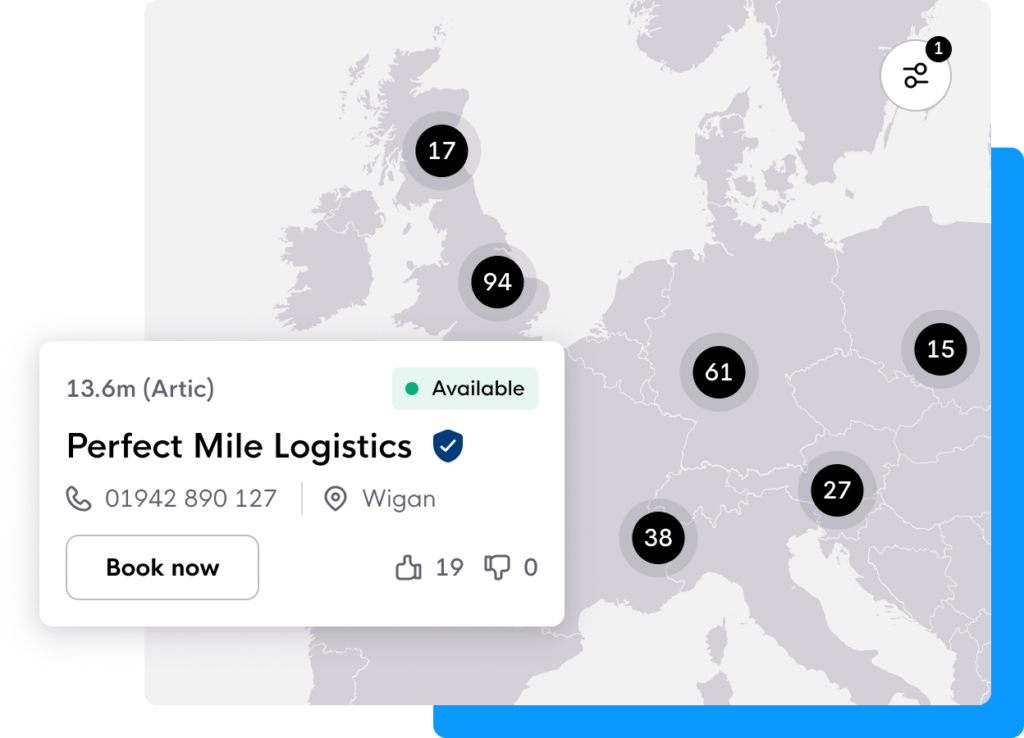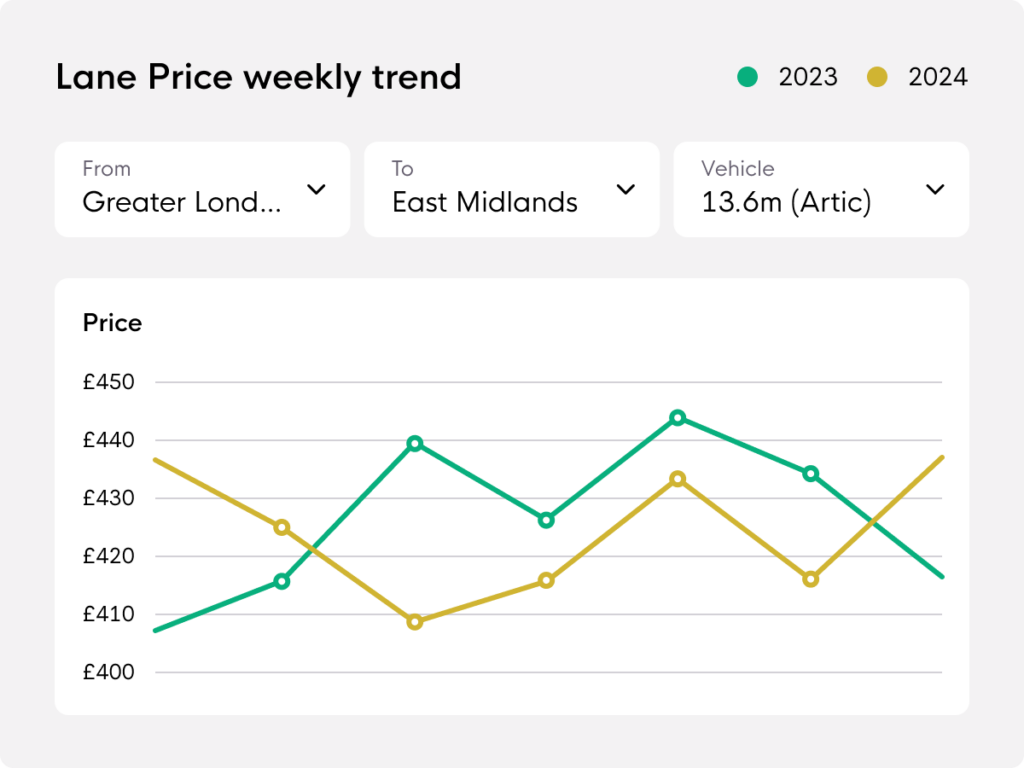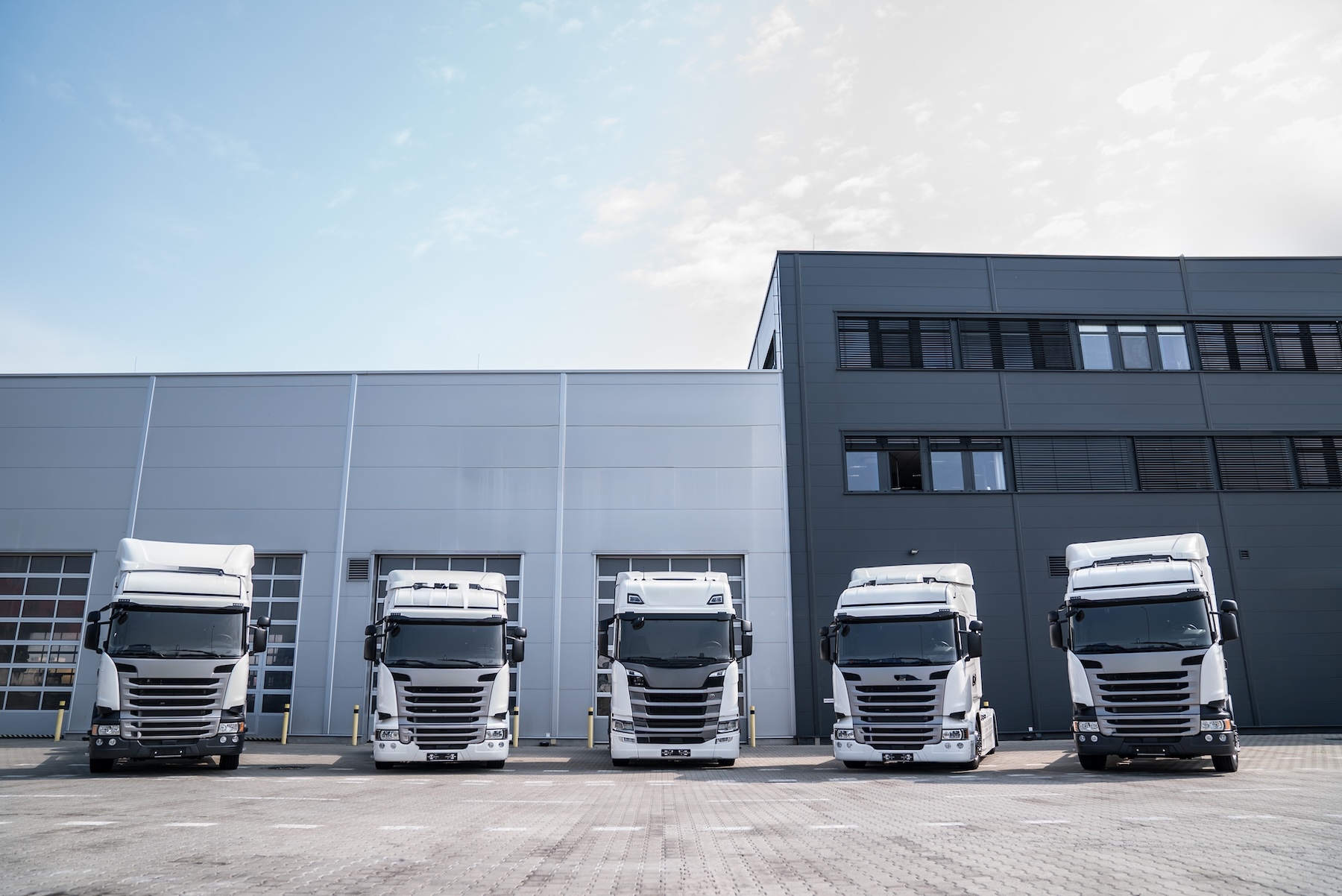The carrier capacity conundrum
Inefficiencies have plagued the logistics industry since time immemorial.
Whenever a freight truck – or, indeed, freight vehicle – is in motion without being full to the brim, someone, somewhere, is losing money. Often many are losing money all at once. With the TEG platform, 3PLs have a tool to maximise carrier capacity and reduce wastage not just within their company, but industry-wide.
One platform, every carrier
With the TEG platform, all of a 3PL’s carriers exist in one digital platform. The setup means you can see where all of your vehicles are, you can see where your vehicles are heading, and you can see which of your vehicles have available capacity.

See precise carrier locations to allocate loads efficiently
Better still, the TEG platform’s hybrid model means you can also see the same things for your existing, external suppliers, and even the suppliers you don’t necessarily have relationships with (who meet your bespoke compliance standards – more on that later).
Armed with unrivalled visibility, you can allocate your capacity to optimally placed carriers, minimising wastage industry-wide.
How to resolve inefficiencies in failed deliveries
Taking a classic, “spot-market” example, let’s say a transport operator learns of a failed delivery, and needs to reallocate a load to another vehicle. Without the TEG platform, you might find an operator with imperfect information calling carriers in search of a satisfactory solution. With the TEG platform, the same operator has complete information… and therefore allocates the load to the perfect carrier.
Speed and agility are the names of the game here. Say, for example, the operator has ten carrier options. One of our carrier’s options is 20 miles from the collection point. The other nine are all 50 miles from the collection point. Should the operator simply pick up the phone, the chances are the job will end up allocated to a carrier inefficiently. Using the TEG platform, however, our operator knows precisely who to call to minimise wastage and, just as importantly, resolve the failed delivery with maximum agility.
How to resolve inefficiencies in two-legged journeys
The same process outlined above clearly extends to two-legged journeys. With the kind of visibility the TEG platform affords, no longer do 3PLs end up with two trucks each running one empty leg. Instead, they have one truck with zero empty legs. What happens to the second truck? That depends on corporate strategy. Asset-heavy 3PLs would likely redeploy the truck, or reserve it to handle increases in demand.
How to resolve inefficiencies in vehicle positioning
So far we’ve covered using the TEG platform to overcome relatively simple wastage scenarios. Of increasing interest, however, is combining the TEG platform’s hybrid, internal/external carrier hub with the platform’s auto-collated analytics to procure capacity strategically.
In this use case, the TEG platform uses aggregated, real-time data to reveal lanes in which capacity is often in need… as wells as lanes in which market-wide capacity is often abundant. Operators most likely have an idea of such lanes already. The TEG platform compliments intuition with stats.

See carrier-saturated lanes; deploy trucks accordingly
Knowing which lanes need carriers and which lanes are oversaturated with carriers, 3PLs can start to shift vehicle positions – particularly if they use a combination of internal and external carriers. In the most obvious strategy, internal carriers are used to cover ‘dark’, while external carriers are used to cover carrier-heavy lanes (in which you know for sure, thanks to the TEG platform, there are lots of empty trucks). All of a sudden, operators no longer have the struggle of finding carriers to cover certain lanes. Similarly, 3PLs no longer have the issue of running empty trucks in carrier-saturated lanes. The best part? The capacity redeployment might be a selfish act (in that it maximises 3PL profits) but, as a byproduct, it benefits the entire industry.
By taking capacity out of saturated lanes and adding capacity into lanes in need of carriers, everyone wins.
Unable to work with external carriers?
A common barrier to strategic procurement (the practice outlined above, in which you use internal and external carriers strategically) is the inability to work with external carriers. Large 3 and 4PLs often have stringent criteria that carriers must meet before both parties can begin working together. Even when carriers do meet 3PL compliance criteria, they need to ‘onboard’, which can take weeks.
Fortunately, the TEG platform solves both of the above issues through TEG Carrier Compliance. The technology allows 3PLs to set their own, bespoke compliance criteria for carriers. 3PLs select, for example, insurance requirements, insolvency requirements, driving standards requirements – whatever they might be. Once rules are set, carriers who meet the criteria can then ‘self-onboard’ through the TEG platform. Carriers simply submit their own, digital documentation for inspection by the third-party supply chain security experts (and TEG partners) Trustd. This ensures any external carriers that 3PLs might work with meet 3PL quality standards.
Better still, Trustd monitors carrier quality and compliance in real-time. So if, for example, one of a carrier’s insurances expires, the carrier’s eligibility to work with you becomes null and void. If it’s beginning to feel like the TEG platform has all bases covered, it’s because covering all bases is precisely what the platform is designed to do: the TEG platform is the end-to-end logistics tech platform, after all.
How to find out more
If, after reading the above, you feel like the TEG platform might be of use to you, you can enlist it in your organisation.
Add your details below and we’ll be in touch.


